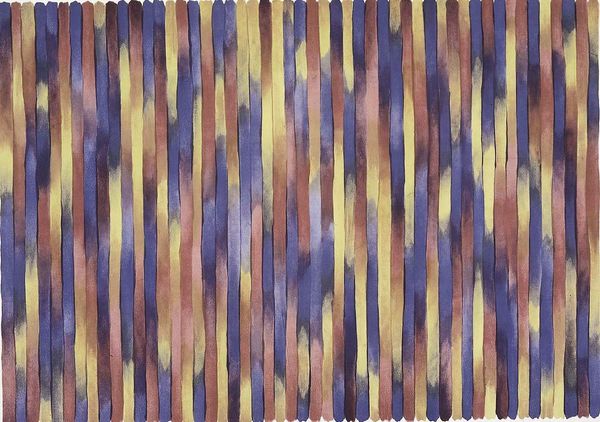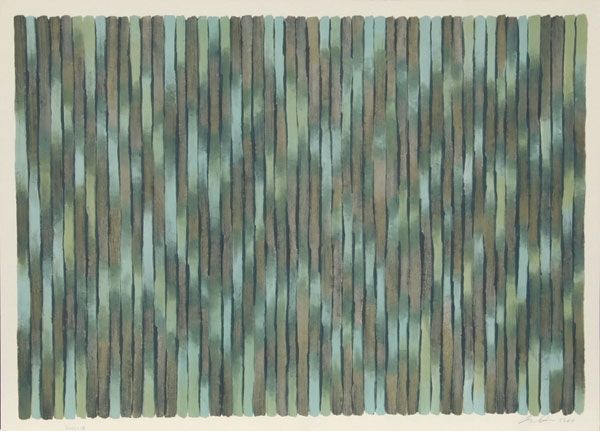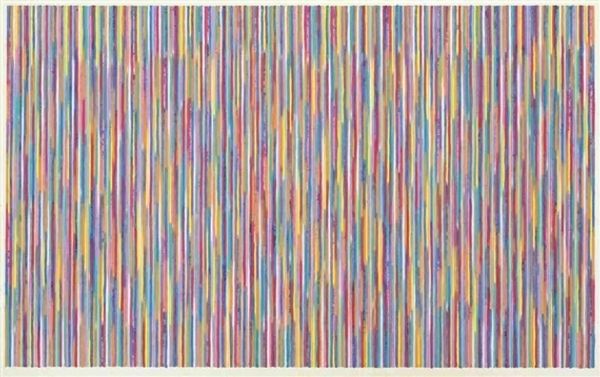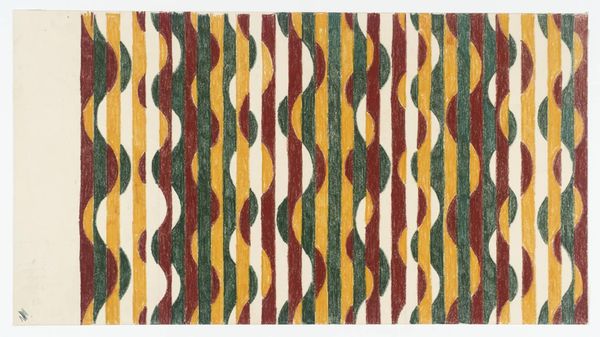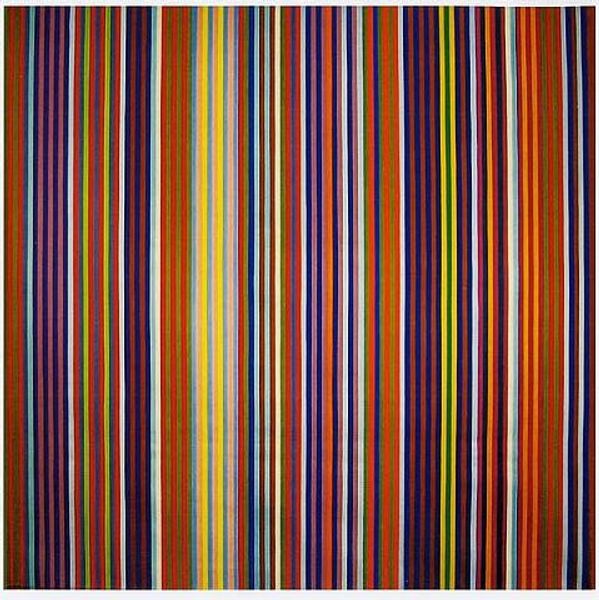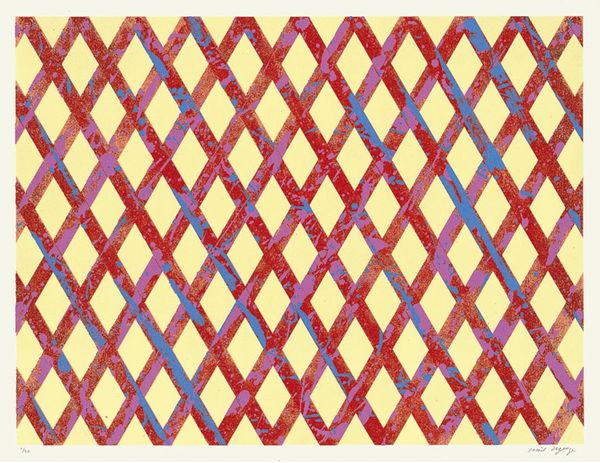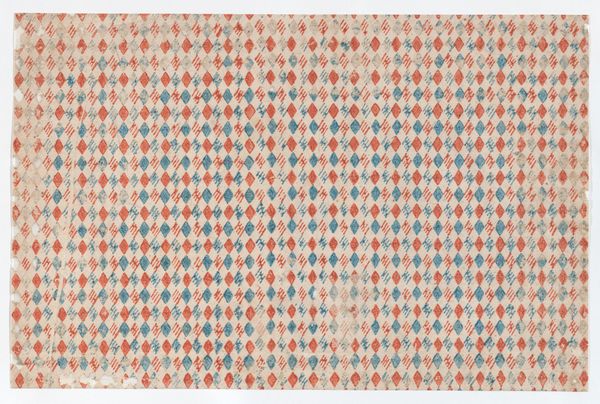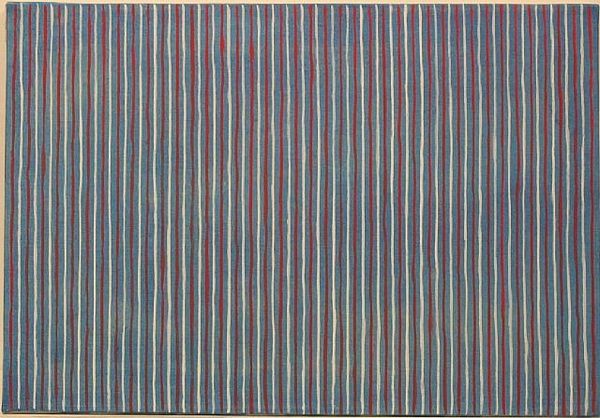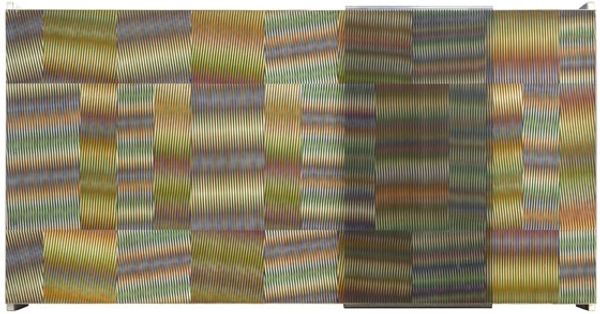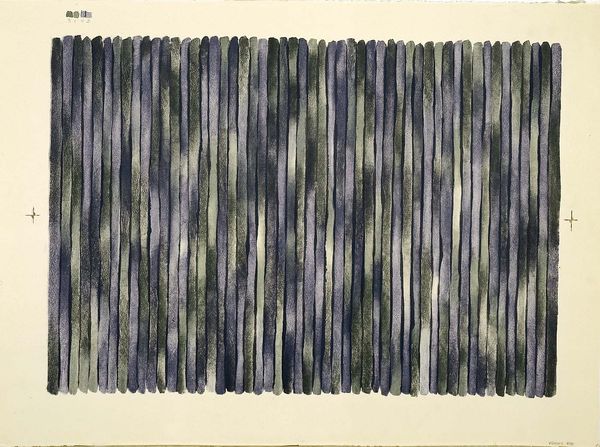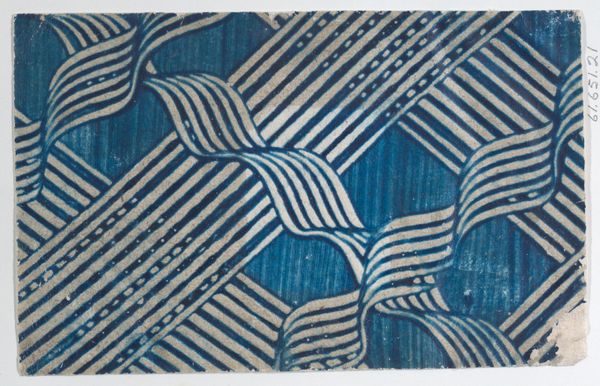
Copyright: Gene Davis,Fair Use
Curator: Here we have Gene Davis’s “Banjo” created in 1981, an acrylic on paper piece. At first glance, it seems like a simple arrangement of vertical lines. Editor: Simple, perhaps, but intensely rhythmic. The juxtaposition of blue and red bands against that lighter cream creates a visual pulse—almost vibrating before my eyes. Curator: The material reality here is key. Davis favored acrylics for their fast-drying properties. One wonders about the process—the tools and labor necessary to produce this composition with its seemingly casual imperfections. Did he measure the intervals precisely, or rely more on intuition? Editor: It's intriguing to consider this work within the broader context of the Pattern and Decoration movement. Davis created these stripes while debates about postmodernism intensified and definitions of art and craft expanded. Do these vertical stripes subvert the heroic machismo of Abstract Expressionism? Curator: It does seem to intentionally avoid expressive gestures. In focusing so rigorously on these discrete bands, their widths slightly different, perhaps he draws attention to the commodification of art? Does the regularity of the intervals somehow echo a sense of seriality, a commentary on industrial modes of production? Editor: Possibly. These works appear during a period that saw the consolidation of many important artists' markets. Looking at Davis through the lens of gendered aesthetics, these somewhat softened stripes present a decidedly less confrontational, less monumental approach compared to, say, a Jackson Pollock or even a Barnett Newman. Is the softness, then, a deliberate questioning of the "genius" figure? Curator: Or is the intention to allow color, and the eye’s movement across the surface, to take precedence? One has to remember the era as well: America's social fabric was shifting in the late 70s into the early 80s, moving into a greater engagement with spectacle and what Guy Debord termed 'the society of the spectacle'. "Banjo" almost seems prescient of the image-saturated environments to come. Editor: That’s a potent point. And in revisiting Gene Davis through these theoretical frameworks, one hopefully reconsiders this era and the ongoing dialogues about aesthetics, identity, and societal critique in visual culture.
Comments
No comments
Be the first to comment and join the conversation on the ultimate creative platform.
